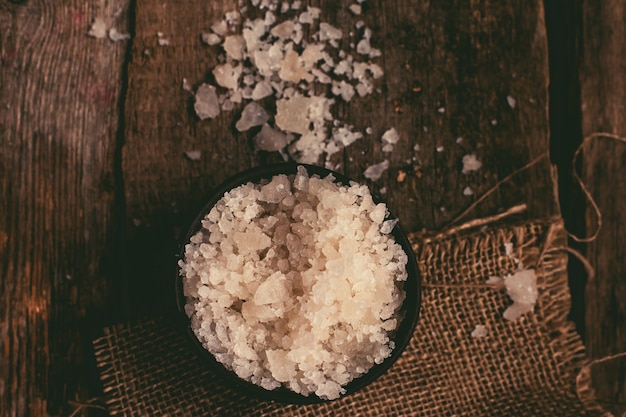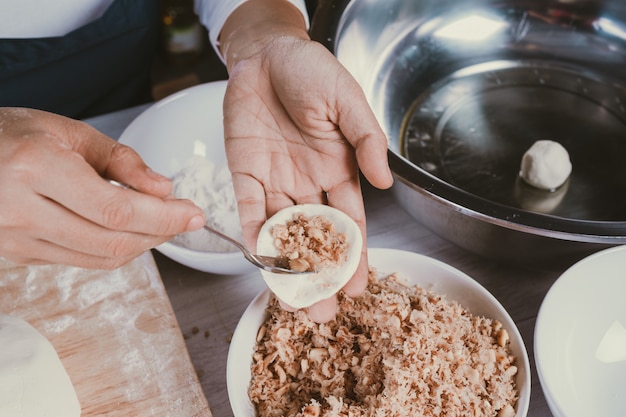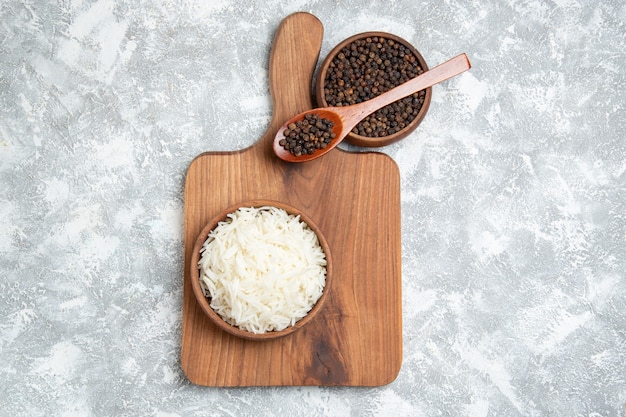Let's face it, swapping white rice for brown rice is a fantastic choice for your health! It's packed with more nutrients, fiber, and flavour. But cooking brown rice can feel like a bit of a mystery. How long should you boil it? What's the perfect water-to-rice ratio? And how do you avoid ending up with a mushy mess? Don't worry, I've been there too. I've had my fair share of rice disasters. But after years of experimentation, I've cracked the code to perfectly cooked brown rice every time. So grab your saucepan, and let's get cooking!
Part 1: Understanding Brown Rice

The whole grain Difference
Before we jump into cooking times, let's talk about what makes brown rice different from its white counterpart. Brown rice is a whole grain, meaning it retains its bran and germ. These parts are packed with fiber, vitamins, and minerals. It's like the difference between a whole apple and a peeled one - the skin and core are where the extra goodness lies. This is also why brown rice takes a bit longer to cook than white rice. The bran makes it a bit tougher, so it needs a bit more time to become tender.
A Rainbow of Brown rice varieties
You might be surprised to learn there's a whole world of brown rice varieties, each with its own unique texture and cooking time.
- Long Grain: This is the most common type, known for its firm texture and separate grains. It's perfect for stir-fries, salads, and side dishes where you want a distinct bite.
- Medium Grain: This variety has a bit more stickiness than long grain, making it ideal for sushi and rice bowls where you want the grains to cling together.
- Short Grain: This is the stickiest type, similar to white sticky rice. It's often used for rice pudding and other creamy dishes.
- wild rice: This isn't technically rice, but rather a type of grass seed. It has a nutty flavour and chewy texture, and it takes longer to cook than other varieties.
- black rice: This exotic variety is rich in antioxidants and boasts a deep purple hue. It cooks up with a slightly chewy texture and a slightly nutty flavour.
- red rice: Another beautiful variety, red rice has a nutty flavour and chewy texture, and it's a good source of fibre.
I personally love long grain brown rice for its versatility, but feel free to experiment with the others to discover your favourites!
Part 2: Getting Ready to Cook

Gathering Your Essential Supplies
Let's get our kitchen ready! You'll need a few key tools for perfect brown rice:
- A saucepan: Choose one that's large enough to hold the rice and water without overflowing.
- Measuring cups and spoons: Accuracy is essential for consistent results, especially when it comes to water.
- Strainer: This helps to rinse the rice before cooking, removing excess starch that can make it sticky and clumpy.
- Lid: It's crucial for trapping heat and ensuring even cooking.
The Importance of Rinsing
Rinsing rice is a crucial step that many people skip. It removes excess starch, which can make the rice sticky and clumpy. To rinse, simply pour the rice into a strainer and hold it under cold running water until the water runs clear. It's like giving your rice a refreshing bath!
Part 3: Cooking Brown Rice on the Stovetop

The Golden Ratio for perfect rice
You'll hear all sorts of ratios for water to rice, but the one I stick to is 2:1. That means for every 1 cup of brown rice, you'll use 2 cups of water. It's simple, consistent, and always yields perfect results.
Step-by-Step Stovetop Instructions
Now, let's get cooking!
- Combine Rice and Water: Add the rinsed rice and water to your saucepan.
- Bring to a Boil: Cover the pot and bring the mixture to a boil over medium-high heat.
- Reduce Heat and Simmer: Once it's boiling, reduce the heat to low, cover the pot, and simmer for 45-60 minutes. I find that 50 minutes is the sweet spot for perfectly cooked rice.
- Let it Rest: Once the cooking time is up, turn off the heat and let the rice sit, covered, for 10 minutes. This allows the rice to absorb any remaining water and become fluffy.
- Fluff and Serve: After 10 minutes, fluff the rice with a fork to separate the grains and serve.
Congratulations! You've just made perfectly cooked brown rice. It's that simple.
Part 4: Cooking Brown Rice in a rice cooker
The Effortless Approach
If you're lucky enough to have a rice cooker, cooking brown rice becomes a breeze. Just follow the manufacturer's instructions, but here's the basic process:
- Rinse the Rice: Give your rice a quick rinse, just as you would if you were cooking it on the stovetop.
- Add Rice and Water: Pour the rinsed rice and water into the rice cooker, making sure to use the correct ratio. Most rice cookers have markings to help with this.
- Press Start: Sit back, relax, and let the rice cooker do its thing. No need to monitor it or worry about burning!
- Fluff and Serve: Once the rice cooker beeps, it's ready to go. Fluff it with a fork and serve.
rice cooker tips for Perfection
- Experiment with the Ratio: Some rice cookers require a slightly different water-to-rice ratio than others. It's worth experimenting a little to find the sweet spot for your particular cooker.
- Utilize Different Settings: Many rice cookers have settings for different types of rice, including brown rice. If yours has one, use it!
Part 5: Troubleshooting Brown Rice Problems
When Things Don't Go as Planned
We've all been there. You're excited about your delicious brown rice dish, but then, disaster strikes! Maybe it's mushy, maybe it's undercooked, or maybe it's just not as fluffy as you hoped. Don't worry, I've got you covered.
Mushy Rice: The "Too Soggy" Problem
Mushy rice is usually caused by using too much water or overcooking. Here's how to avoid it:
- Use the Right Ratio: Stick to the 2:1 ratio – 2 cups of water for every 1 cup of rice.
- Don't Overcook: Check the rice after 45 minutes. If it seems almost cooked, you can turn off the heat and let it rest for a few extra minutes.
- Don't Let It Sit Too Long: Once the rice is cooked, don't let it sit in the water for too long. It will continue to absorb water and become mushy.
Undercooked Rice: The "Too Hard" Problem
Undercooked rice is usually the result of not cooking it long enough. Here's how to fix it:
- Cook for Longer: If the rice is still hard after 50 minutes, cook it for an additional 5-10 minutes.
- Add More Water: If you've accidentally used too little water, you can add a little more during the cooking process. Just be careful not to add too much, or you'll end up with mushy rice.
Rice That's Not Fluffy: The "Clumpy" Problem
Clumpy rice can happen if you haven't rinsed the rice properly or if it's been overcooked.
- Rinse Thoroughly: Make sure to rinse the rice until the water runs clear.
- Don't Overcook: Stick to the recommended cooking time, and don't let it sit in the water for too long after it's cooked.
Part 6: Beyond the Basics: Elevating Your Brown Rice Flavour
So, you've mastered the art of cooking perfect brown rice. But now, let's have some fun! Brown rice can be so much more than just a plain side dish. There are countless ways to enhance its flavour and elevate your meals to new heights.
The Power of Herbs and Spices
A simple sprinkle of herbs and spices can transform your brown rice into a culinary delight.
- Italian Herbs: Basil, oregano, rosemary, and thyme.
- Mexican Spices: Cumin, chili powder, paprika, and cilantro.
- Asian Inspiration: Ginger, garlic, sesame oil, soy sauce.
- Classic Comfort: Salt, pepper, and a knob of butter.
Adding Veggies for Colour and Nutrition
Incorporating chopped vegetables during cooking is a fantastic way to boost flavour, colour, and nutrients.
- Peas: A classic combination, adding sweetness and a pop of green.
- Carrots: A crunchy and healthy addition, offering a subtle sweetness.
- Broccoli: A hearty and nutritious choice, adding a mild bitterness.
- Mushrooms: Earthy and umami, providing a delicious depth of flavour.
Mixing Grains for Variety and Texture
Mixing brown rice with other grains adds variety and texture.
- Quinoa: A complete protein source, offering a slightly nutty flavour.
- Wild Rice: Adds a chewy texture and nutty flavour.
- Barley: A hearty grain with a nutty and slightly sweet flavour.
Part 7: Serving Up Your Brown Rice Creations
From Side Dish to Star of the Show
Brown rice is incredibly versatile. It can be enjoyed as a simple side dish, or it can take center stage in a main course.
Side Dish Star
For a simple yet satisfying side dish, try serving your brown rice with:
- grilled chicken or fish: A classic pairing that's always a hit.
- Roasted vegetables: A healthy and flavourful accompaniment.
- Stews and soups: A comforting and filling addition.
Main Course Hero
If you're looking for a more substantial meal, consider incorporating brown rice into these dishes:
- Rice bowls: Build your own with brown rice, your favorite protein, vegetables, and sauce.
- fried rice: A delicious and satisfying dish, perfect for a quick and easy meal.
- stuffed peppers or bell peppers: A hearty and healthy vegetarian option.
- Risotto: A creamy and comforting dish with an Italian twist.
Part 8: Brown Rice Storage and Leftovers
Keeping Your Rice Fresh
Store cooked brown rice in an airtight container in the refrigerator for up to 4 days. It's best to use it within that timeframe for the best flavour and texture.
Reheating Rice to Perfection
To reheat brown rice, simply microwave it on high for 30-60 seconds or until warmed through. You can also reheat it on the stovetop by adding a splash of water and heating it over low heat until warmed through.
Creative Leftover Ideas
Leftover brown rice is perfect for:
- rice salads: Combine cooked brown rice with chopped vegetables, herbs, and a vinaigrette dressing.
- Rice pudding: A comforting and creamy dessert.
- Brown rice burgers: A healthy and delicious vegetarian option.
- Rice balls: A fun and easy snack or appetizer.
Part 9: FAQs
Let's address some common questions you might have about brown rice.
Is brown rice healthier than white rice?
Absolutely! Brown rice is a whole grain, meaning it retains its bran and germ, which are rich in fiber, vitamins, and minerals. White rice, on the other hand, has been stripped of these nutrients during processing. So, brown rice is a much healthier choice.
Does brown rice cause gas?
While brown rice is a good source of fiber, which is beneficial for digestion, some people may experience gas or bloating after eating it. This is because fibre can be difficult to digest for some people. The more you eat brown rice, the more your body will become accustomed to it. If you're concerned, try reducing your portion size or starting with smaller amounts.
Can brown rice be cooked in a microwave?
You can cook brown rice in the microwave, but it's not the best method. It's often difficult to get the rice cooked evenly, and it can easily become mushy. Stovetop and rice cooker methods are generally more reliable.
Is brown rice gluten-free?
Yes, brown rice is naturally gluten-free. It's a safe and delicious option for people with celiac disease or gluten sensitivity.
Can I eat brown rice every day?
It's perfectly fine to eat brown rice every day as part of a balanced diet. It's a healthy and nutritious option that provides essential nutrients and fiber. However, it's always a good idea to vary your diet and include other whole grains, fruits, vegetables, and lean protein sources.
There you have it! You're now equipped with the knowledge and confidence to cook brown rice like a pro. It's really not that complicated, and once you get the hang of it, you'll be making delicious brown rice dishes all the time. Happy cooking!
Everyone is watching

Corn on the Cob: The Ultimate Guide to Perfectly Cooked Ears
Healthy MealsAh, corn on the cob. Just the name evokes images of sunny days, barbecues, and that sweet, juicy flavour that ...

Perfect Pork Roast Oven Cooking Time: A Guide to Delicious Results
Healthy MealsThere's something truly satisfying about a perfectly roasted pork. The aroma alone is enough to make your mout...

Scallops: The Ultimate Guide to Perfect Cooking
Healthy MealsAh, scallops. Those delicate, sweet, and utterly delicious morsels of the sea. They hold a special place in my...

Ham Cooking Time: How Long to Bake, Smoke, or Boil a Delicious Ham
Healthy MealsAh, ham. It's a classic, isn't it? A real crowd-pleaser, especially around holidays. And when done right, it'...

Spaghetti Squash: The Ultimate Guide to Cooking and Serving
Healthy MealsRemember that time you saw spaghetti squash at the supermarket, looking all bumpy and strange, and thought, "W...
